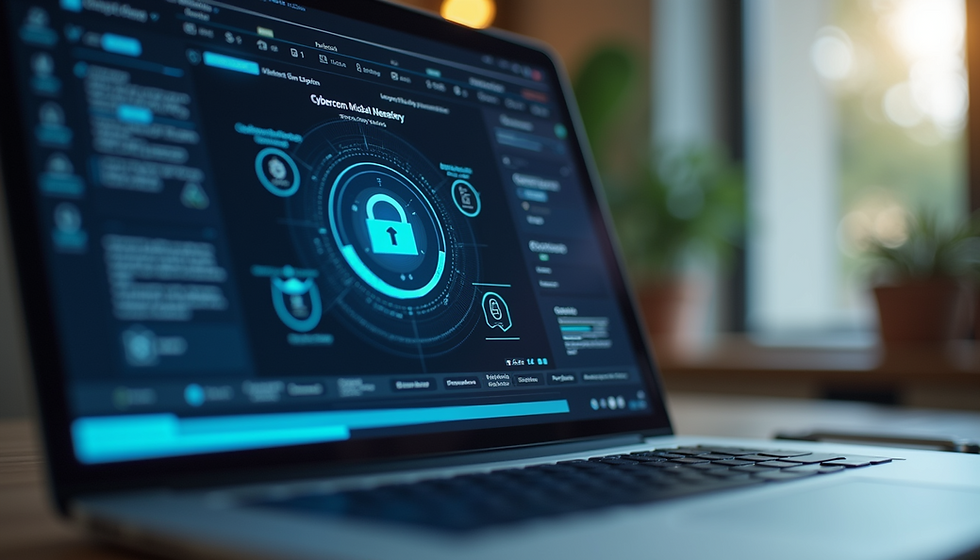Navigating Windows 11 Lockdown and Compliance Post Windows 10 EOL
- John W. Harmon, PhD

- Jun 26
- 4 min read
As small businesses evolve in a rapidly changing technological landscape, security becomes an essential priority. With Windows 10 reaching its end of life (EOL), many small and medium-sized businesses (SMBs) are transitioning to Windows 11. This upgrade presents unique security challenges and compliance requirements that owners must navigate. Understanding how to effectively secure your business in this new environment is paramount.
Modern threats demand a more stringent approach to security, particularly as cyber-attacks become increasingly sophisticated. SMBs are often targeted due to perceived vulnerabilities, making proactive measures critical. This post explores how to lock down Windows 11 effectively while ensuring compliance with standards like NIST and CMMC.
Understanding the Risks
Before diving into the solutions, it's essential to grasp the risks associated with utilizing Windows 11. Businesses often store sensitive data, and any breach can lead to severe financial losses and reputational damage. Common challenges include:
Phishing attacks that target employees to gain unauthorized access.
Ransomware attacks that encrypt files, demanding payment for recovery.
Insider threats where employees misuse access to sensitive data.
Recognizing these risks can help inform the strategies businesses need to implement to safeguard their environments.
Upgrading to Windows 11: What’s Different?
Transitioning to Windows 11 introduces several features aimed at enhancing security. These include:
Enhanced Hardware Requirements: Windows 11 mandates TPM 2.0, a security feature designed to protect against firmware attacks. Ensuring your devices meet these requirements can help bolster overall security.
Windows Hello: This biometric authentication method allows for secure sign-ins without passwords, reducing the risks of credential theft.
Built-in Antivirus and Firewall: Windows Defender is robust and embedded in the system. Its continuous updates provide a safety net against emerging threats.
These advancements create a more secure environment; however, they also necessitate a comprehensive strategy for effective implementation.
Implementing Security Best Practices
To optimize Windows 11 security for your SMB, consider the following best practices:
1. Regular Software Updates
Keeping your operating system and applications updated is crucial. Windows 11 provides automatic updates, but it's essential to ensure that your applications, particularly those handling sensitive information, are also kept current.
2. Multi-Factor Authentication (MFA)
Implementing MFA can significantly reduce the risk of unauthorized access. Require additional verification methods for all critical systems, particularly when accessing sensitive data or conducting financial transactions.
3. Employee Training
Invest in regular training programs to educate employees about cybersecurity practices. This includes recognizing phishing emails, understanding safe browsing habits, and proper data handling procedures.
4. Access Control
Limit user privileges based on the principle of least privilege. Ensuring that employees have access only to the data necessary for their roles will minimize the risk of insider threats.
5. Utilize Virtual Private Networks (VPNs)
VPNs can help protect business data when employees work remotely. They create a secure connection between devices and the internet, shielding data transmissions from prying eyes.
6. Endpoint Protection
With the rise of remote work, protecting endpoints is vital. Employ endpoint detection and response (EDR) solutions to monitor for suspicious activity and ensure expeditious responses to potential threats.
Compliance Considerations
Transitioning to Windows 11 also brings about new compliance challenges. As you enhance security, consider aligning with frameworks such as the NIST Cybersecurity Framework and the Cybersecurity Maturity Model Certification (CMMC).
These standards offer a roadmap for achieving and maintaining compliance, outlining key areas such as:
Risk management
Incident response planning
Continuous monitoring
Understanding and integrating these compliance measures not only helps safeguard your business but can also enhance credibility with clients and partners.
The Role of Backups
A robust backup strategy is imperative to safeguard against data loss from ransomware and other threats. Implement a routine backup schedule to protect business-critical information.
1. Regular Testing
Regularly test your backup and recovery protocols to ensure you can restore systems quickly in the event of an incident. This will minimize downtime and mitigate the impact of data loss.
2. Offsite Backups
Maintain backups in multiple locations, including cloud-based solutions. This redundancy provides an additional safety net and ensures data resilience.
Leveraging Windows 11 Features for Security
Windows 11's built-in features can be taken further to enhance security.
1. BitLocker Encryption
Utilize BitLocker Drive Encryption to protect sensitive information on devices. This feature helps guard against data breaches if a device is lost or stolen.
2. Windows Defender Firewall
Ensure that the Windows Defender Firewall is enabled and configured to block unauthorized access while allowing necessary traffic.
Conclusion
Securing your small or medium-sized business in the post-Windows 10 EOL environment requires a proactive and comprehensive approach. With the introduction of Windows 11, SMBs have access to advanced security features that, when combined with best practices and compliance frameworks like NIST and CMMC, can significantly enhance their security posture.
Investing in education, technology, and strategic planning is key. By prioritizing cybersecurity, SMB owners can not only protect their business assets but also build stakeholder trust, ensuring resilience in today’s threat landscape.
Stay vigilant, stay compliant, and always be prepared to adapt to the evolving security environment as you navigate the transition to Windows 11.

📅 Book your time here:
You can also recheck your security standing anytime with CyberScore:




Comments